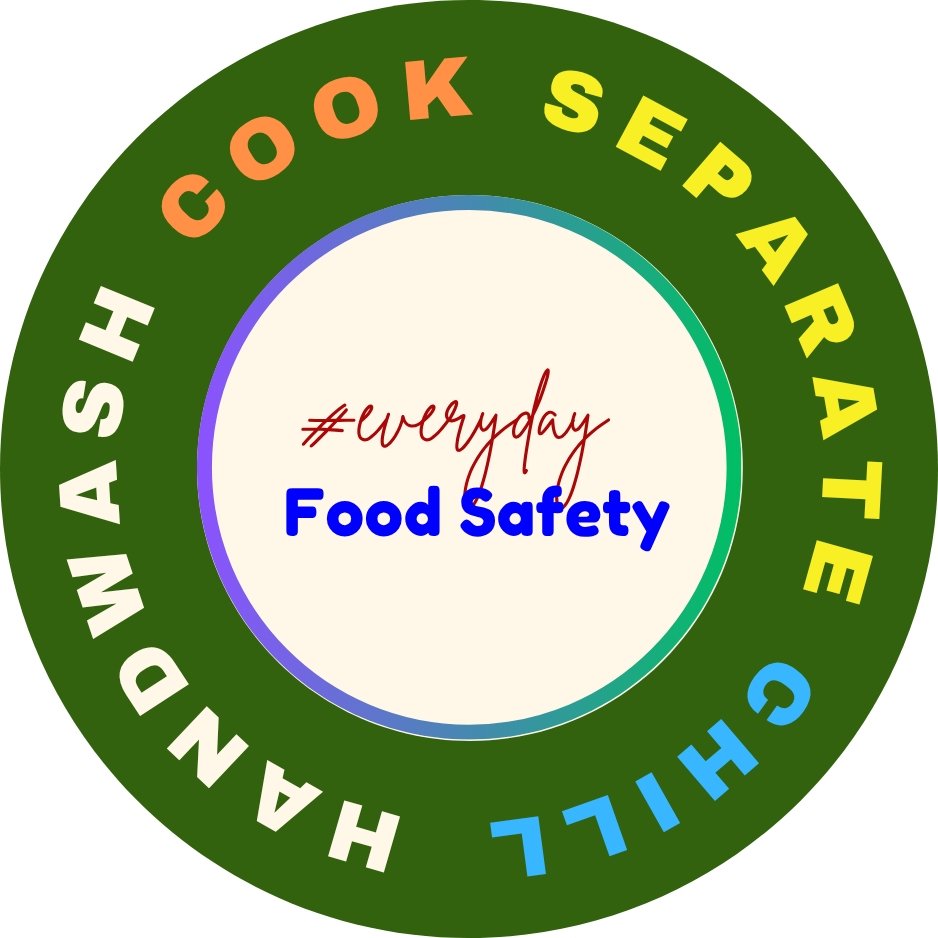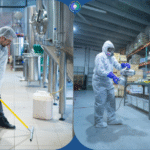Everyday Food Safety
Cleaning and Sanitation: Key to Food Safety
In the food industry, cleaning and sanitation are not just daily tasks; they are crucial for maintaining food safety. Without proper hygiene practices, food businesses risk contamination, fail inspections, and damage their reputation.
By maintaining consistent cleaning routines and conducting regular sanitation checks, you significantly reduce the risk of foodborne illnesses while ensuring adherence to food safety standards.
Why are cleaning and sanitation important for food safety?
📌 Statistics on Foodborne Illness: Each year, approximately 48 million people in the U.S. suffer from foodborne illnesses, according to the CDC. That translates to 1 in 6 Americans annually, resulting in 128,000 hospitalizations and 3,000 deaths.
📌 Link Between Sanitation and Outbreaks: Over 50% of foodborne outbreaks stem from poor sanitation. The FDA highlights that unclean food contact surfaces are among the most frequently cited violations in food facilities.
📌 Hand Hygiene’s Role: About 60% of restaurant outbreaks are linked to poor hand hygiene or unclean equipment. The FDA’s EHS-Net findings show that more than half of food establishments fail to follow proper handwashing and surface cleaning procedures.
📌 Effectiveness of Proper Handwashing: Proper handwashing can reduce illnesses by up to 48%. The Global Handwashing Partnership and the CDC confirm that washing hands with soap is one of the most effective ways to reduce diarrheal diseases and ensure food safety. In fact, the CDC states that handwashing with soap protects about 1 out of every three young children against diarrhea, underscoring its effectiveness.
What are the common effects of poor cleaning and sanitation in the Food Industry?
Poor sanitation not only creates a messy work environment but also directly affects food safety, business operations, and consumer trust. Here’s how:
- Contamination Risks. When surfaces, drains, and equipment like slicers aren’t properly cleaned, harmful pathogens such as Listeria, E. coli, or Salmonella can thrive and contaminate food products.
- Compliance issues. Regulatory agencies like the FDA often cite unsanitized food contact surfaces as major violations during inspections. This can result in warnings, penalties, or even shutdowns.
- Spoilage and waste. Residue and bacteria on improperly cleaned equipment can cause products to spoil more quickly, leading to increased food waste and financial losses.
- Lost consumer trust. Dirty or poorly maintained facilities create a bad impression. Visible hygiene issues can turn customers away and harm your brand’s reputation.
How Do Proper Cleaning and Sanitation Practices Prevent Contamination?
- Use Proper Cleaning Chemicals. Always use cleaning chemicals at the correct concentrations to prevent harmful pathogens from surviving due to ineffective cleaning.
- Sanitize High-Risk Areas: Concentrate on high-risk zones like slicers, conveyor belts, and packaging lines. Identify and minimize contamination hotspots in food production.
- Regularly Clean Hidden Areas: Make sure to clean drains and hidden spots often to stop bacteria like Listeria from growing.
- Train Staff on Hand Hygiene: Providing training on proper hand hygiene practices helps reduce the risk of cross-contamination from human contact.
What Are the Common Cleaning and Sanitation Challenges in Food Production Facilities?
Even well-intentioned sanitation programs can fall short because of ongoing challenges that threaten food safety. Recognizing these weaknesses is crucial for improving your facility’s hygiene practices.
- Missed Cleaning Schedules. Without a clear and enforced cleaning plan, vital surfaces and equipment may remain dirty, increasing the risk of microbial growth and contamination.
- Incorrect Chemical Dilution. Improper chemical dilution can reduce cleaning effectiveness or leave harmful residues that endanger product safety.
- Incomplete Sanitation Records. Poor documentation can lead to failed audits, regulatory fines, and difficulties in tracking or improving cleaning performance over time.
- Cross-Contamination Risks. Cross-contamination occurs when tools, equipment, or workers move between raw and ready-to-eat areas without proper cleaning or separation, potentially causing bacteria from raw food to contaminate finished products.
What Is the Importance of Cleaning and Sanitation Checklists in Food Safety Compliance?
A Cleaning and Sanitation Inspection Checklist is a vital tool that ensures structure, consistency, and accountability within your food safety program. This checklist helps prevent missed cleaning tasks and guarantees proper documentation of sanitation activities.
- Comprehensive Cleaning Verification: The checklist ensures that every surface, tool, and food-contact area gets a thorough cleaning to prevent contamination.
- No Steps Missed: Using a checklist ensures that you don’t skip any steps in your sanitation routine by providing a consistent, step-by-step guide for all sanitation tasks.
- Clear Staff Responsibilities: Assigning tasks via the checklist fosters accountability, ensuring everyone understands their duties and deadlines.
- Maintained Records for Audits: Proper documentation guarantees compliance with HACCP, FDA, and local food safety laws, serving as proof of your facility’s sanitation efforts.
What Are the Advantages of Using a Standardized Cleaning and Sanitation Program?
Implementing a standardized cleaning and sanitation program helps food businesses maintain consistency, ensure compliance, and streamline operations. This method turns cleaning into a controlled, trackable process:
- Standardization. The checklist ensures that each team and shift follows the same procedures, reducing variability and improving overall sanitation consistency.
- Accountability. Staff can approve tasks upon completion, creating a transparent system that enhances internal audits and increases accountability.
- Reduce Risks. Using a checklist regularly helps identify gaps or missed tasks early, preventing contamination, product recalls, or violations.
- Increase Efficiency. A simple cleaning process helps staff save time, prevents repeated cleaning tasks, and minimizes product loss due to preventable contamination.
Conclusion
Maintaining proper cleaning and sanitation practices is fundamental to ensuring food safety and protecting public health. Consistent routines, regular inspections, and adequate staff training not only prevent contamination and foodborne illness but also uphold a facility’s reputation and compliance with industry standards. By integrating a structured cleaning and sanitation program, food businesses create safer environments for both employees and consumers.




